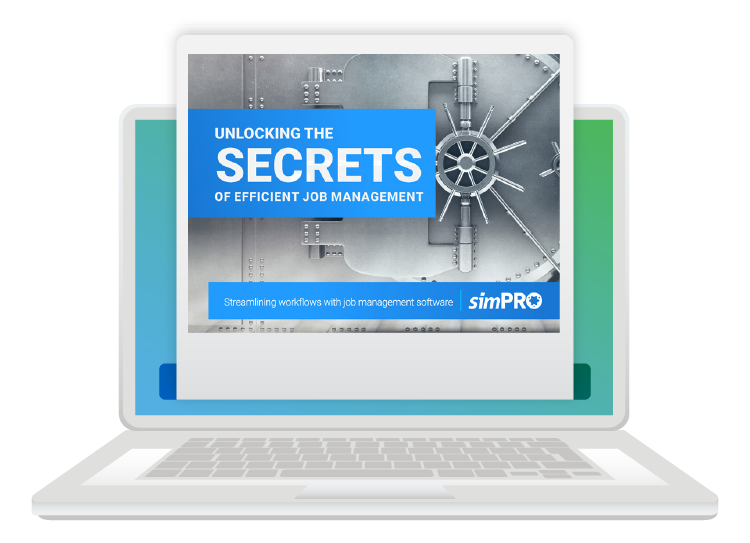
Looking for job management software for your field service business but don’t know where to start? You’re not alone. Choosing the right job management software can be confusing and time consuming. But, it doesn’t have to be. If you have a clear vision of the features you require, you can find a solution for your business.
During your decision making process, it’s also important to remember that competing software may provide different solutions for different processes. So, while you are on the lookout for key features, you should also complete your own research to ensure the software you choose will be the right fit for your business.
Keep reading to discover the top in-office and in-field features to look for in a job management solution, as well as our top tips for researching software solutions.
Key features to look for in job management software

For field service businesses, it’s imperative for processes between office and field to be efficient and communication to be fast and simple. Therefore when choosing a job management software, be sure to consider both in-office and in-field capabilities.
Below we’ve listed a few key features you should look for when choosing a job management software for your field service business. However, as we mentioned above, all businesses are different so be sure to do your research and prioritize the features most important for your workflows.
In-office features and capabilities:
- Stores customer information in a central hub accessible from anywhere at any time
- Automates data entry
- Enhances the visibility of staff in the field for streamlined scheduling and dispatching
- Tools to quote, invoice and receive payments
- Connects the office to the field with two-way sync
- Reporting functionality
In-field features and capabilities:
- Update job details, site history and customer details on the go with two-way sync between office and field
- Functionality to capture customer or project manager sign-off on jobs while in the field
- Tools to quote, invoice and receive payment on site
- Access job notes, site history, photos, maps and other documents in the field
- Track time spent on-site and travelling to jobs
Three tips for researching software solutions
With many varying factors between unique business workflows and software features, it’s important to do your research before committing to a solution. Here are three tips to support you during the research phase of your decision making process.
- Look for software which will complement your workflows. To determine if software will complement your workflows, identify key processes in your business and find software which offers features to streamline these processes.
- Identify if the software provides an end-to-end solution that can help you manage everything from customer data, to quoting to scheduling and reporting. This will ensure that as your business grows, you won’t have to change your processes or software on an ongoing basis. It will also help streamline individual job workflows and provide visibility to manage multiple jobs at once.
- Talk to other businesses like yours that are using job management software. This will give you a unique perspective on the real-world capabilities on how the software can work for your business. Alternatively, you can read case studies about the software.
Bonus tip: Map your service job workflow
Once you have a general idea of features you want in your software, break your list down further and be more specific. You can do this by mapping your service job workflow. Using post-it notes, map your workflow out step-by-step. This will help highlight the key processes which may be unique to your business and others that can be streamlined.

Want to learn more about job management software?
Download our FREE eBook, Unlocking the secrets of efficient job management. This eBook discusses how job management software can help you make your business more efficient and provides further insight into choosing the best solution for your workflows. Plus, you’ll get our top tips for the change management process to ensure you have a smooth and successful transition to your new software.